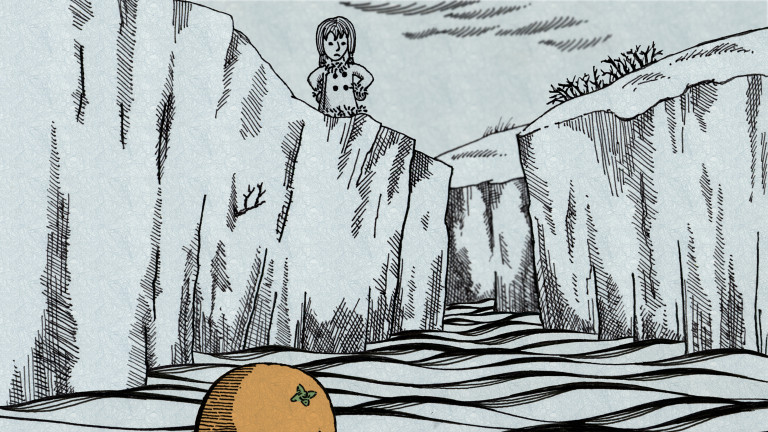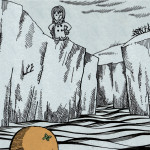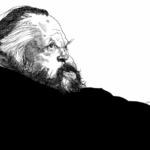A LinkedIn Article by Andy Collen
When looking back at my first introduction to the digital organic world, I recall my first steps into the technology frontier. My first introduction to computers was in the late seventies. Computer pioneer and Aspen local, Nick DeWolf built the very first computer I ever played with. He was very interested in trying to get us kids excited about technology.
Nick DeWolf was the science/engineer dude from down the street. He was also the guy who created what the world knows today as the JPG format. At like nineteen he graduated from MIT and eventually created the first computer chip checking machine, which meant folks could finally focus on production quality.
One of Nick DeWolf’s public projects in Aspen was the creation of downtown’s amazing, interactive “Dancing Fountain.” He and a local sculptor designed it for all the tourists and local kids to enjoy. They connected the controls of the fountain through a computer control box. Soon they had it online and anyone with a computer could play with what pattern the fountain would run through. Of course, this was the late 70’s, very early 80’s, so not many locals had computers. This fountain was my first introduction into digital organic tech.
Flash forward to Portland, Oregon in the early nineties and my return to computers in my world of animation. By now I was traditionally trained as a 2D cell animator which meant lots of drying racks and painting of individual colors. You had to do one color all the way through the scene, then another, and another, drying each time, scene after scene. This was very tedious and took up lots of physical space and time. I began to see the potential for how computer technology was going to change my industry within a few years. Soon I was old-schooling it, puddling paints and using Light Wave as well. Tap and fill with my Amiga 3000 meant whipping through coloring scenes way faster than ever before. What had once taken a day or so, was now done in a few hours.
While Nick had been my intro as to what a computer was, I soon found myself with another young computer coder kid out of Carnegie Mellon. David Tin Nyo trained me on his Amiga, then sold us that computer. One of our first projects was an in-house video for Intel, located here in Portland. The special effects they wanted couldn’t be generated on a consumer Intel chip computer at the time, whereas that Amiga of ours was magic. We created one of Intel’s in-house classic videos on the Amiga. Of course, now the Intel chips are state of the art.
The studio made short films as one way to pioneer new techniques. One year we did the first ever colored sand film, Hero Sandwich. Next was our International Short “Winter.” At first we approached creating Winter from outside of the computer because we wanted a hand drawn, quill pen style. This was during the same year I was showing software use at NAB. The booth across from us was a company called WACOM (WA in Chinese means heart, and COM is short for computer). WACOM devices were the first tech to capture the artists’ touch inside the digital world; the computer with heart.
I showed the folks at the NAB conference our inked animation tests and explained that I needed to scan a ton of my wife Amy’s inked frames into the computer, cut them out and composite them with all the other art layers, and render the final sequences. A Wacom Cintiq tablet was the best tool that would allow me to touch up the frames and play not only with line pressure but with background textures as well. A Cintiq tablet meant I could now replicate her penmanship.
So to be quite honest about this film, it’s the first film our studio did where we created all the images outside the computer and then put all the elements together in the computer via After Effects. After Effects now is way more powerful now than it was then.
So, in this new digital NFT world, Winter’s composited files are the only place where the film’s full animation exists. The film’s unusual digital organic style came to life through the very same digital worlds that Nick and Dave had shown me as a kid.
Happy Trails Animation has always been about the heart. With Wacom’s tech I was able to experiment with creating frame-by-frame art inside the computer, art that looked like it had been done with real art materials. In fact, the further our studio gets into technology, the more we want our projects to span both the digital and organic worlds. Pokemon Go was really just a game, but with a digital organic approach, it could be so much more. We are now living in a world where it’s not either, but rather – we need to create worlds that tie digital and organic mediums together.
Winter was our first film to hit it big and win a ton of awards. Most of the festivals it got into called to interview us about our technique. They really seemed to like our 3D/2D cheat. We put our ‘money shots’ right in the front of the film, which gives it personality. You are in the world of Winter all the way through this short.
The best part was finding out that the audiences of the world understood our non-verbal message; it broke through every language barrier. With this Winter NFT sale we are trying to show that Indie animated films can be just as special as those created by ‘big box’ studios. There is so much Mickey art out there, whereas the style we created for Winter is special. We wanted the look and style to match the message and judging by all its awards and its numerous International Film Festival showings, I’d say we hit the mark with this film.
Can’t wait to see what’s next. We are now working on a few Metaverse projects, so stay ‘tooned’ and check back later! No matter what, we will always create in a digital organic world. I hope that Nick DeWolf is looking down at this young boys’ project and smiling, knowing he started the snowball. And now that snowball has turned into Winter NFTs.




